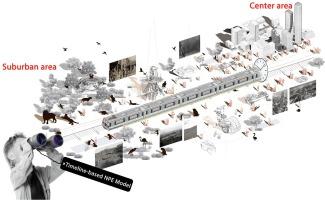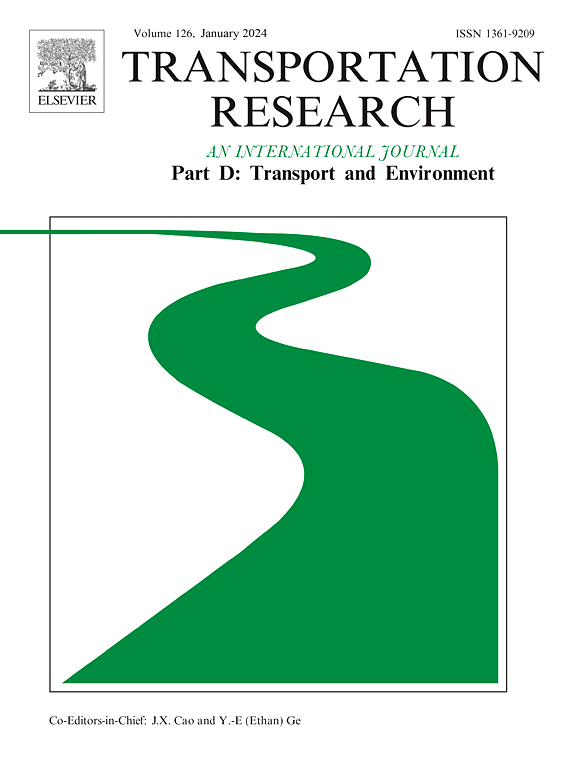通过节点-空间-生态(NPE)综合模式增强公交导向开发的可持续性
IF 7.3
1区 工程技术
Q1 ENVIRONMENTAL STUDIES
Transportation Research Part D-transport and Environment
Pub Date : 2024-10-12
DOI:10.1016/j.trd.2024.104456
引用次数: 0
摘要
以公交为导向的发展(TOD)为提高城市环境的可持续性提供了一种战略方法。节点-地点模型是 TOD 类型中的经典分析框架,是评估 TOD 效果的基础。然而,这一模型因其有限的适应性和静态性而受到批评。本研究试图弥补这些不足,提出了一种新颖的、基于时间线的节点-地点-生态(NPE)模型,整合了 K 均值聚类和可持续发展线(SDL)测试,以评估 2011 年至 2019 年期间 96 个 TOD 站点的可持续发展进展。结果表明,在八年的时间里,东京都区内的 96 个车站总体上呈现出积极的发展趋势。此外,我们还观察到,位于大都市中心的车站在节点、地点和生态维度上的垄断性呈上升趋势。这项研究强调了城市规划中动态 TOD 模型的必要性,为公交枢纽的可持续发展提供了启示。本文章由计算机程序翻译,如有差异,请以英文原文为准。

Enhancing transit-oriented development sustainability through the integrated node-place-ecology (NPE) model
Transit-Oriented Development (TOD) offers a strategic approach to enhance urban environmental sustainability. The node-place model, which is a classic analytical framework within the TOD typology, forms a foundation for evaluating TOD effectiveness. However, this model has been critiqued for its limited adaptability and static nature. This study seeks to bridge these gaps by presenting a novel, timeline-based node-place-ecology (NPE) model, integrating K-means clustering and Sustainable Development Line (SDL) testing to evaluate the sustainability progress of 96 TOD stations from 2011 to 2019. Results indicate that over the span of eight years, the 96 stations within the Tokyo metropolitan area have generally exhibited a positive trend. Additionally, we observed an increasing trend of monopolization in the node, place, and ecology dimensions at the stations located in the metropolitan center. This study underscores the necessity for dynamic TOD models in urban planning, offering insights into the sustainable evolution of transit hubs.
求助全文
通过发布文献求助,成功后即可免费获取论文全文。
去求助
来源期刊
CiteScore
14.40
自引率
9.20%
发文量
314
审稿时长
39 days
期刊介绍:
Transportation Research Part D: Transport and Environment focuses on original research exploring the environmental impacts of transportation, policy responses to these impacts, and their implications for transportation system design, planning, and management. The journal comprehensively covers the interaction between transportation and the environment, ranging from local effects on specific geographical areas to global implications such as natural resource depletion and atmospheric pollution.
We welcome research papers across all transportation modes, including maritime, air, and land transportation, assessing their environmental impacts broadly. Papers addressing both mobile aspects and transportation infrastructure are considered. The journal prioritizes empirical findings and policy responses of regulatory, planning, technical, or fiscal nature. Articles are policy-driven, accessible, and applicable to readers from diverse disciplines, emphasizing relevance and practicality. We encourage interdisciplinary submissions and welcome contributions from economically developing and advanced countries alike, reflecting our international orientation.

 求助内容:
求助内容: 应助结果提醒方式:
应助结果提醒方式:


